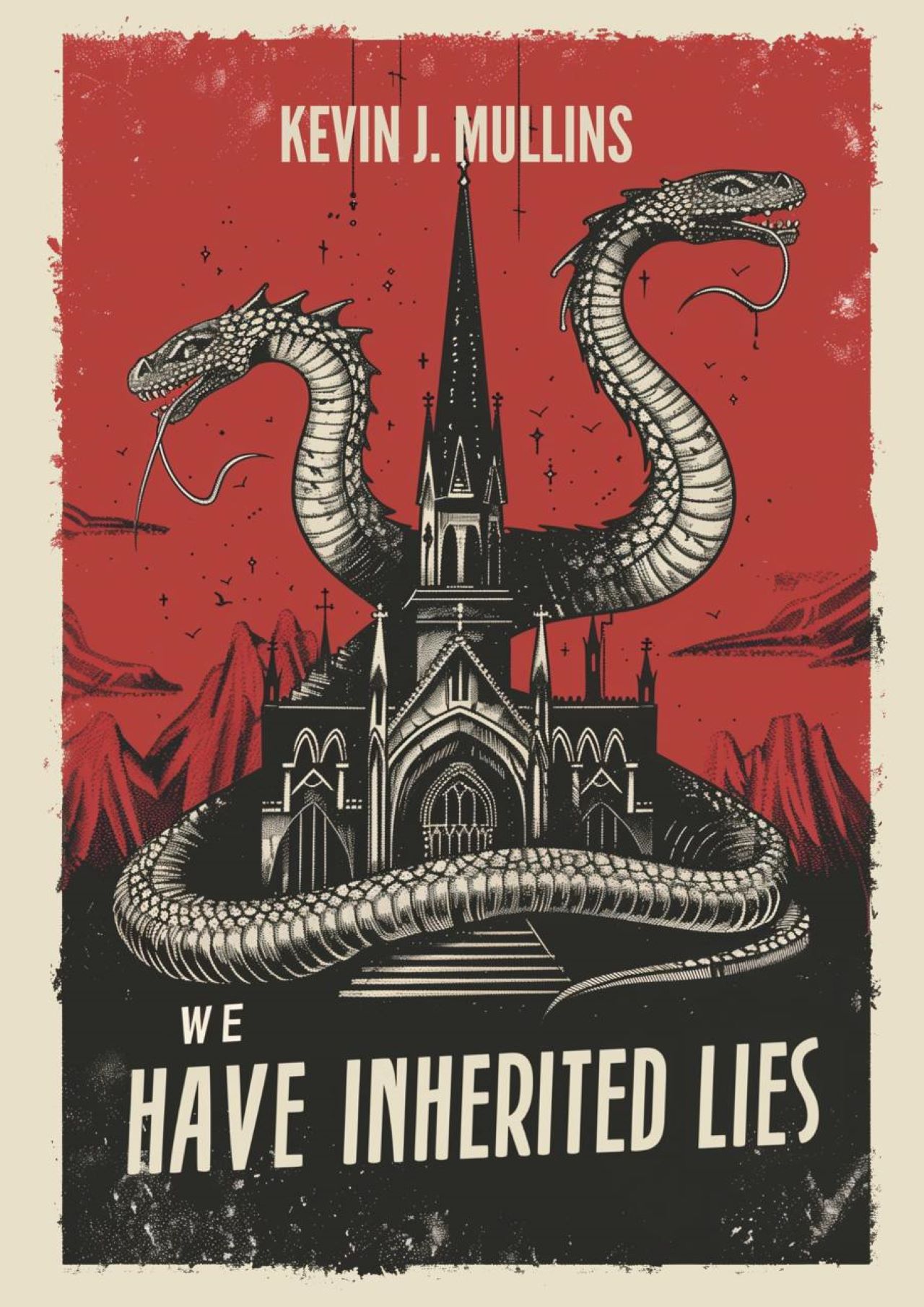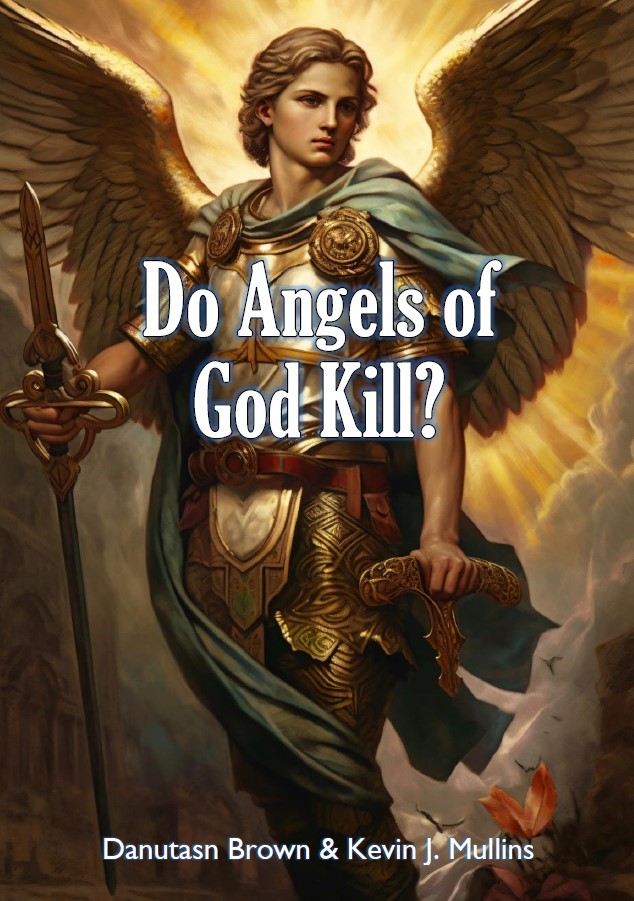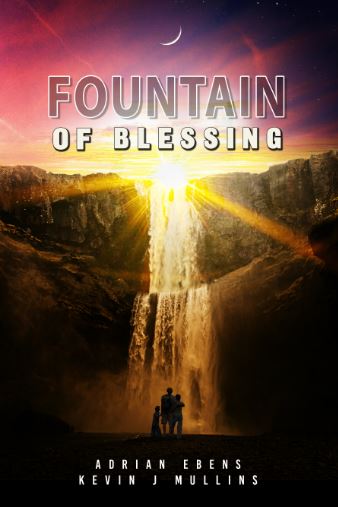(Revelation 20) What Happens During the Millennium?
In our previous study we took a look at the seven last plagues which bring about a reversal of creation, leaving the earth in a mangled mess. We saw in Isaiah 24:19-23 how “the earth is utterly broken down, the earth is clean dissolved, the earth is moved exceedingly” and it is at this time when “the LORD shall punish (visit) the host of the high ones that are on high, and the kings of the earth upon the earth.” Then, those who have despised and rejected the free gift of salvation “shall be gathered together, as prisoners are gathered in the pit, and shall be shut up in the prison, and after many days shall they be visited.” This scene reminds us of what we read in Revelation chapter 20:
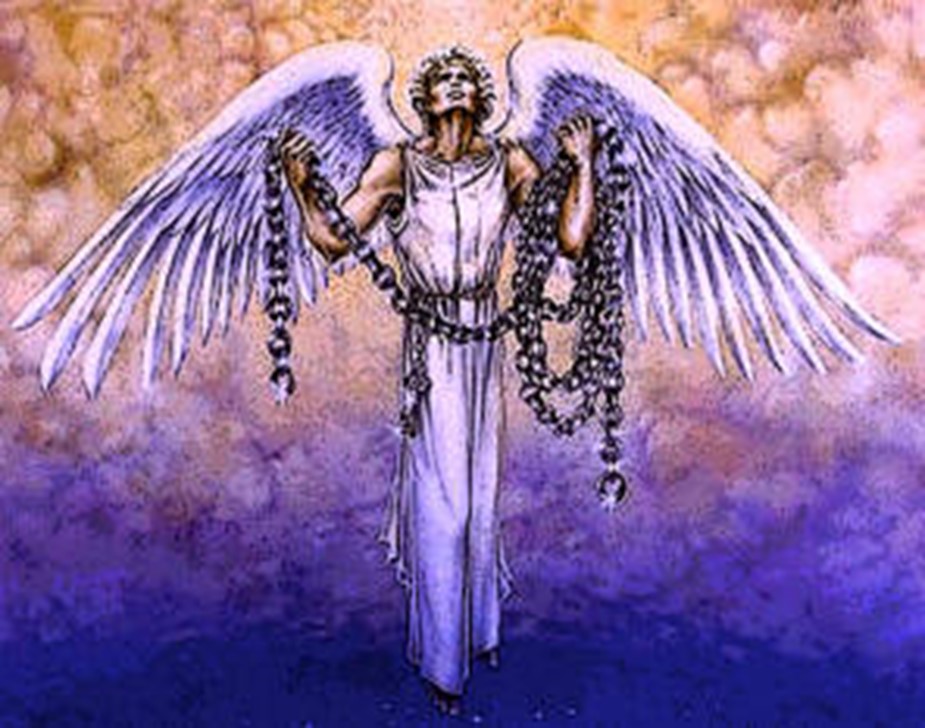 “And I saw an angel come down from heaven, having the key of the bottomless pit and a great chain in his hand. And he laid hold on the dragon, that old serpent, which is the Devil, and Satan, and bound him a thousand years, And cast him into the bottomless pit, and shut him up, and set a seal upon him, that he should deceive the nations no more, till the thousand years should be fulfilled: and after that he must be loosed a little season.” (Revelation 20:1-3)
“And I saw an angel come down from heaven, having the key of the bottomless pit and a great chain in his hand. And he laid hold on the dragon, that old serpent, which is the Devil, and Satan, and bound him a thousand years, And cast him into the bottomless pit, and shut him up, and set a seal upon him, that he should deceive the nations no more, till the thousand years should be fulfilled: and after that he must be loosed a little season.” (Revelation 20:1-3)
We see here that the “many days” referred to in Isaiah parallel the “thousand years” in Revelation. This 1,000-year period is commonly known as “the Millennium.” It is during this time when the earth shall be “broken down … and moved exceedingly”, or as the Christian Standard Bible says, “The earth is completely devastated; the earth is split open; the earth is violently shaken.”
Can we know for sure that this devastation brings about a reversal of creation? Yes! Knowing what we have learned throughout this prophecy series, concerning the fact that literal events in Israel’s history have a more widespread application in the last days, let’s read what Jeremiah says about the coming of the LORD:
“I beheld the earth, and, lo, it was without form, and void; and the heavens, and they had no light. I beheld the mountains, and, lo, they trembled, and all the hills moved lightly. I beheld, and, lo, there was no man, and all the birds of the heavens were fled. I beheld, and, lo, the fruitful place was a wilderness, and all the cities thereof were broken down at the presence of the LORD, and by His fierce anger. For thus hath the LORD said, The whole land shall be desolate; yet will I not make a full end. For this shall the earth mourn, and the heavens above be black: because I have spoken it, I have purposed it, and will not repent, neither will I turn back from it.” (Jeremiah 4:23-28)
Notice the earth will be “without form and void.” This is the same language used at the very beginning of creation:
“In the beginning God created the heaven and the earth. And the earth was without form, and void; and darkness was upon the face of the deep. And the Spirit of God moved upon the face of the waters.” (Genesis 1:1, 2)
We know Jeremiah is not referring back to creation because he mentions “there was no man, and all the birds of the heavens were fled” and “all the cities thereof were broken down at the presence of the LORD.” There was no man, birds, or cities at the time the earth was without form and void in Genesis. In fact, the Greek word for “deep” in the Septuagint (Greek translation of the Hebrew Bible) in verse 2 is ἄβῠσσος (ábussos), which is the same Greek word used for the “abyss” or “bottomless pit” in Revelation 20.
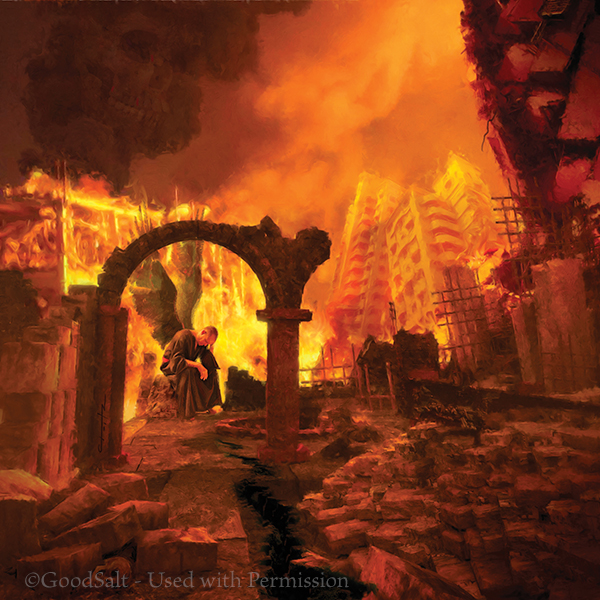
So what does all this mean? It means that during the Millennium, the earth will be a wasteland. It will also be the “prison” where Satan is bound. The mighty angel is said to bind Satan with a “great chain.” This clearly is not a literal chain, but a chain of circumstances. What are the circumstances? John says that Satan is bound with a seal “that he should deceive the nations no more, till the thousand years should be fulfilled.” During the Millennium Satan cannot tempt and deceive anyone because, as Jeremiah prophesied, “there was no man” and “the fruitful place was a wilderness.” The question to ask now is, where did everyone go?
Events Surrounding the Second Coming of Christ
“Marvel not at this: for the hour is coming, in the which all that are in the graves shall hear His voice, And shall come forth; they that have done good, unto the resurrection of life; and they that have done evil, unto the resurrection of damnation.” (John 5:28, 29)
 Jesus speaks of two resurrections. 1. The resurrection of life. 2. The resurrection of damnation. The first of these resurrections takes place at His second coming:
Jesus speaks of two resurrections. 1. The resurrection of life. 2. The resurrection of damnation. The first of these resurrections takes place at His second coming:
“For the Lord Himself shall descend from heaven with a shout, with the voice of the archangel, and with the trump of God: and the dead in Christ shall rise first: Then we which are alive and remain shall be caught up together with them in the clouds, to meet the Lord in the air: and so shall we ever be with the Lord.” (1 Thessalonians 4:16, 17)
Here we are witnessing “the resurrection of life” in which all who have died “in Christ” will be raised from the dead and be caught up into the air (sky) along with those “in Christ” who are alive at the second coming. Paul speaks of this in his first letter to the Corinthians:
“Behold, I show you a mystery; We shall not all sleep [die], but we shall all be changed, In a moment, in the twinkling of an eye, at the last trump: for the trumpet shall sound, and the dead shall be raised incorruptible, and we [who are alive] shall be changed. For this corruptible must put on incorruption, and this mortal must put on immortality.” (1 Corinthians 15:51-53)
In 2 Thessalonians we see what happens to those who are alive at this time but are not “in Christ”:
“Now we beseech you, brethren, by the coming of our Lord Jesus Christ, and by our gathering together unto Him … And then shall that Wicked be revealed, whom the Lord shall consume with the spirit of His mouth, and shall destroy with the brightness of His coming: Even him, whose coming is after the working of Satan with all power and signs and lying wonders, And with all deceivableness of unrighteousness in them that perish; because they received not the love of the truth, that they might be saved.” (2 Thessalonians 2:1, 8-10)
While all the people who had accepted God’s gift of salvation are rising up into the sky, all the wicked that are alive are “destroyed by the brightness of His coming.” This does not mean that Christ is shooting out lightning bolts to kill them. It’s the “brightness”, His full revelation of glory (love) which convicts the sinner and consumes them with their self-guilt and self-condemnation, not believing in God’s free forgiveness. Remember, it’s the same “brightness” (glory) that enshrouds those in Christ as it is which enshrouds those who reject Christ. It all depends on how one reacts to the brightness. (Please see the article entitled: Who Are the Two Witnesses? for more details on this concept). Jeremiah prophesied of this day:
“Therefore prophesy thou against them all these words, and say unto them, The LORD shall roar from on high, and utter His voice from His holy habitation; He shall mightily roar upon His habitation; He shall give a shout, as they that tread the grapes, against all the inhabitants of the earth. A noise shall come even to the ends of the earth; for the LORD hath a controversy with the nations, He will plead with all flesh; He will give them that are wicked to the sword, saith the LORD. Thus saith the LORD of hosts, Behold, evil shall go forth from nation to nation, and a great whirlwind shall be raised up from the coasts of the earth. And the slain of the LORD shall be at that day from one end of the earth even unto the other end of the earth: they shall not be lamented, neither gathered, nor buried; they shall be dung upon the ground.” (Jeremiah 25:30-33)
Take notice how this compares to what we read in 1 Thessalonians chapter 4 which says, “For the Lord Himself shall descend from heaven with a shout, with the voice of the archangel” and Jeremiah says, “The LORD shall roar from on high, and utter His voice from His holy habitation; He shall mightily roar upon His habitation; He shall give a shout.”
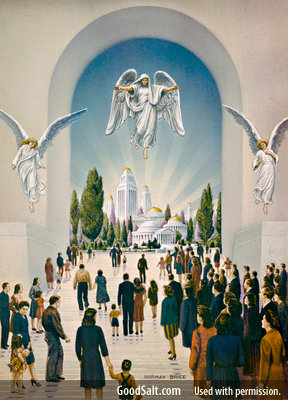 Okay, so here’s what we know so far:
Okay, so here’s what we know so far:
1. All those who are dead “in Christ” rise from the grave into the sky.
2. All those who are alive “in Christ” rise up into the sky with those who are resurrected.
3. All the lost who are alive but without Christ die.
But what about those who are without Christ who are already dead? Are they resurrected? Yes, at the “resurrection of damnation”, but when is that? Let’s go back to Revelation chapter 20:
“And I saw thrones, and they [those in Christ] sat upon them, and judgment was given unto them: and I saw the souls of them that were beheaded for the witness of Jesus, and for the word of God, and which had not worshipped the beast, neither his image, neither had received his mark upon their foreheads, or in their hands; and they lived and reigned with Christ a thousand years. But the rest of the dead lived not again until the thousand years were finished. This is the first resurrection. Blessed and holy is he that hath part in the first resurrection: on such the second death hath no power, but they shall be priests of God and of Christ, and shall reign with Him a thousand years.” (Revelation 20:4-6)
The two resurrections are separated by the 1,000 years. These verses can be a little confusing to read because it almost looks like John is saying that, when the rest of the dead do not rise until after the 1,000 years, “this is the first resurrection.” But that’s not what he’s saying. The phrase, “But the rest of the dead lived not again until the thousand years were finished” is a parenthetical phrase. It belongs in parenthesis because it’s an after-thought or an additional thought that John is inserting. John could have easily put that phrase at the end of his paragraph. So, it’s those who are reigning with Christ for 1,000 years who are blessed because they have taken part in the first resurrection – “But the rest of the dead lived not again until the thousand years were finished.” (Note: John writes in the same manner in John chapter 12, where verses 2-11 are parenthetical).
Please note that Scripture has only revealed to us that those who are in Christ at His coming are taken up into the sky. It says nothing about us being brought back down until after the 1,000 when it says, “And I saw a new heaven and a new earth: for the first heaven and the first earth were passed away; and there was no more sea. And I John saw the holy city, new Jerusalem, coming down from God out of heaven, prepared as a bride adorned for her husband” (Revelation 21:1, 2). We have learned from previous studies that the New Jerusalem is a symbol of God’s people. Again, the conclusion here is that no one will be on the earth during the Millennium except for Satan and his angels. This is his prison in which he is bound by a chain of circumstances “that he should deceive the nations no more, till the thousand years should be fulfilled: and after that he must be loosed a little season” (Revelation 20:3). How is he loosed? By the resurrection of the dead at the second resurrection. He now has people to deceive. And that’s exactly what we see:
“And when the thousand years are expired, Satan shall be loosed out of his prison, And shall go out to deceive the nations which are in the four quarters of the earth, Gog and Magog, to gather them together to battle: the number of whom is as the sand of the sea.” (Revelation 20:7, 8)
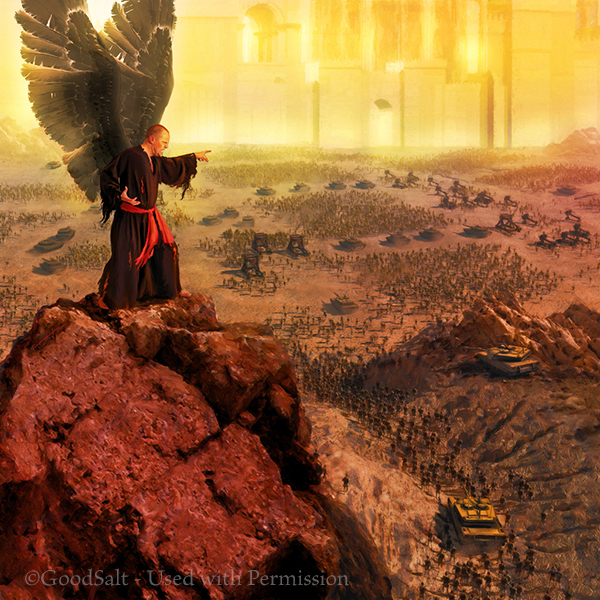 In the very next verse (verse 9) it says, “And they went up on the breadth of the earth, and compassed the camp of the saints about, and the beloved city: and fire came down from God out of heaven, and devoured them.” So, we see that at some point after or just before the ending of the 1,000 years, the “camp of the saints” (the New Jerusalem) descends from heaven and rests upon the earth. It’s at this time when I believe Zechariah's prophecy shall come to pass:
In the very next verse (verse 9) it says, “And they went up on the breadth of the earth, and compassed the camp of the saints about, and the beloved city: and fire came down from God out of heaven, and devoured them.” So, we see that at some point after or just before the ending of the 1,000 years, the “camp of the saints” (the New Jerusalem) descends from heaven and rests upon the earth. It’s at this time when I believe Zechariah's prophecy shall come to pass:
“And His (Christ’s) feet shall stand in that day upon the mount of Olives, which is before Jerusalem on the east, and the mount of Olives shall cleave in the midst thereof toward the east and toward the west, and there shall be a very great valley; and half of the mountain shall remove toward the north, and half of it toward the south … and the LORD my God shall come, and all the saints with thee … And the LORD shall be king over all the earth: in that day shall there be one LORD, and his name one. All the land shall be turned as a plain from Geba to Rimmon south of Jerusalem: and it shall be lifted up, and inhabited in her place, from Benjamin's gate unto the place of the first gate, unto the corner gate, and from the tower of Hananeel unto the king's winepresses. And men shall dwell in it, and there shall be no more utter destruction; but Jerusalem shall be safely inhabited.” (Zechariah 14:4, 9-11)
It is true that Revelation chapter 21 seems to suggest that the New Jerusalem doesn’t descend until after the new earth, but it’s again simply a matter of John’s writing style (such as the parenthetical phrase of the dead rising after the 1,000 years are finished). We see this writing style in the book of Genesis as well, wherein it seems from reading chapter 2 verses 21-23 it addresses the creation of woman as if it happened later after creation week, when we know from chapter 1 verses 26-27 Eve was created on day 6.
We see this again right after John describes the fiery doom of the wicked. In Revelation 20:9 he says the wicked perish in the fire, but then in verse 12 he says, “ ... I saw the dead, small and great, standing before God ...” If they just perished in the flames, how can they now be standing before God? The answer is that Revelation 20:7-10 is just an overview of what happens to the wicked after the Millennium. The verses that come after this overview describe things in a little more detail. If you’ve learned anything from this prophecy series (or any of the articles and books on this website), we gentiles (especially those of us in the Western world) have a lot to learn concerning the Hebraic writing style so we can comprehend biblical language.
"In the non-Western world, stories often circulate around the event until it coalesces [comes together to form a whole]; therefore, orderliness (but not the chronological sequence) is important ... Unfortunately for us, the events in the Bible are not necessarily presented in historical chronological order." (E. Randolph Richards & Brandon J. O'Brien, Misreading Scripture With Western Eyes, pp. 147-148)
Note: We will discuss the fire which comes down from God out of heaven in a bit.
What About “One Will Be Taken and the Other Left?”
Many people have been duped by the popular movie and book series called “Left Behind”, which teaches that Jesus will come secretly and quietly to retrieve His people while all the wicked are left on this earth wondering where everyone else went. At this time, the mark of the beast is enforced, giving man a second chance at salvation through the worldwide preaching of converted Jews, who now have their temple in Jerusalem built.
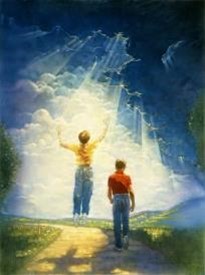 The main portion of Scripture of where this idea comes from is found in Jesus’ words as He is describing events surrounding His second coming:
The main portion of Scripture of where this idea comes from is found in Jesus’ words as He is describing events surrounding His second coming:
“Then shall two be in the field; the one shall be taken, and the other left. Two women shall be grinding at the mill; the one shall be taken, and the other left.” (Matthew 24:40, 41)
The conclusion most come to is that the ones who are “taken” are taken to heaven, while the others who are “left” are left upon the earth to live through the enforcement of the mark of the beast and seven last plagues. However, if we look at the previous verses, Jesus tells us:
“But as the days of Noah were, so shall also the coming of the Son of man be. For as in the days that were before the flood they were eating and drinking, marrying and giving in marriage, until the day that Noah entered into the ark, And knew not until the flood came, and TOOK them all away; so shall also the coming of the Son of man be.” (Matthew 24:37-39)
Here, Jesus clearly says the ones who were taken are the ones who were swept away by the flood. Notice how Luke records Jesus’ words:
“And as it was in the days of Noah, so shall it be also in the days of the Son of man. They did eat, they drank, they married wives, they were given in marriage, until the day that Noah entered into the ark, and the flood came, and destroyed them all.” (Luke 17:26, 27)
So, we can see that “took them all away” is synonymous with “destroyed them all.” It doesn’t sound like they are taken to heaven does it? Then in verses 35 and 36, Luke recites Jesus’ words concerning one being taken and the one being left:
“Two women shall be grinding together; the one shall be taken, and the other left. Two men shall be in the field; the one shall be taken, and the other left.” (Luke 17:35-36)
Now notice the disciples’ next question and Jesus’ answer:
“And they answered and said unto Him, Where, Lord? And He said unto them, Wheresoever the body is, thither will the eagles be gathered together.” (Luke 17:37)
It would make no sense for the disciples to ask where the ones who are left are. If two men are in a field, and one is taken and the other is left, obviously the one who is left is still in the field. They were clearly asking about the place where the other man will be taken. Jesus says, “Wheresoever the body is, thither will the eagles be gathered together.” Other translations say “vultures” instead of eagles. Jesus is clearly saying that the vultures are gathered together feeding off the dead corpses of the ones who are taken.

This is explained again in the 19th chapter of the book of Revelation where it describes Christ’s second coming:
“And I saw heaven opened, and behold a white horse; and He that sat upon him was called Faithful and True, and in righteousness He doth judge and make war … And the armies which were in heaven followed Him upon white horses, clothed in fine linen, white and clean … And I saw an angel standing in the sun; and he cried with a loud voice, saying to all the FOWLS THAT FLY in the midst of heaven, Come and GATHER YOURSELVES TOGETHER unto the supper of the great God; That ye may EAT the flesh of kings, and the flesh of captains, and the flesh of mighty men, and the flesh of horses, and of them that sit on them, and the flesh of all men, both free and bond, both small and great. And I saw the beast, and the kings of the earth, and their armies, gathered together to make war against Him that sat on the horse, and against His army. And the beast was TAKEN, and with him the false prophet that wrought miracles before him, with which he deceived them that had received the mark of the beast, and them that worshipped his image. These both were cast alive into a lake of fire burning with brimstone. And the remnant were slain with the sword of Him that sat upon the horse, which sword proceeded out of his mouth: and all the fowls were filled with their flesh.” (Revelation 19:11, 14, 17-21)
I think it’s pretty plain that, in Christ’s parable, the ones who are taken are the ones who are not going to heaven don’t you? This means the ones who are left are the ones who are saved. “And they [those who are left] shall go forth, and look upon the carcasses of the men that have transgressed against Me …” (Isaiah 66:24).
In Genesis 7:23 we read that everything was “destroyed from the earth: and Noah only remained alive, and they with him in the ark.” The Revised Standard Version (among others) says it this way: “only Noah was left, and those that were with him in the ark.” And remember, Jesus said, “as the days of Noah were, so shall also the coming of the Son of man be.”
Isaiah, prophesying of the end times, echoes the scene:
“Behold, the LORD maketh the earth empty, and maketh it waste, and turneth it upside down, and scattereth abroad the inhabitants thereof … The land shall be utterly emptied, and utterly spoiled: for the LORD hath spoken this word. The earth mourneth and fadeth away, the world languisheth and fadeth away, the haughty people of the earth do languish. The earth also is defiled under the inhabitants thereof; because they have transgressed the Laws, changed the Ordinance, broken the everlasting covenant. Therefore hath the curse devoured the earth, and they that dwell therein are desolate: therefore the inhabitants of the earth are burned, and FEW ARE LEFT.” (Isaiah 24:1, 3-6)
What About Jesus Coming as a Thief in the Night?
“But of the times and the seasons, brethren, ye have no need that I write unto you. For yourselves know perfectly that the day of the Lord so cometh as a thief in the night. For when they shall say, Peace and safety; then sudden destruction cometh upon them, as travail upon a woman with child; and they shall not escape.” (1 Thessalonians 5:1-3)
By reading these verses, many have concluded that since Jesus will return “as a thief in the night”, He is going to return secretly and quietly to steal away His people. The belief is that if you are not saved and are flying in an airplane, but the pilot is saved, he’s going to suddenly disappear leaving no one to fly the plane, thus “sudden destruction” comes upon all those who are left on the plane.
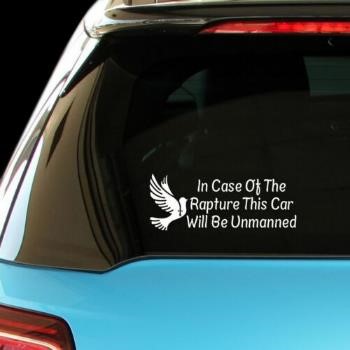 However, this is not what Paul is saying. He’s saying, to those who have rejected their salvation and refused to learn anything about the Bible, Jesus will come unexpectedly. Notice how Paul continues his thought in verse 4:
However, this is not what Paul is saying. He’s saying, to those who have rejected their salvation and refused to learn anything about the Bible, Jesus will come unexpectedly. Notice how Paul continues his thought in verse 4:
“But ye, brethren, are not in darkness, that that day should overtake you as a thief. Ye are all the children of light, and the children of the day: we are not of the night, nor of darkness.” (1 Thessalonians 5:4, 5)
Jesus only comes “as a thief” to those who are not prepared. Here’s how the New Living Translations puts it:
“Now concerning how and when all this will happen, dear brothers and sisters, we don’t really need to write you. For you know quite well that the day of the Lord’s return will come unexpectedly, like a thief in the night. When people are saying, ‘Everything is peaceful and secure,’ then disaster will fall on them as suddenly as a pregnant woman’s labor pains begin. And there will be no escape. But you aren’t in the dark about these things, dear brothers and sisters, and you won’t be surprised when the day of the Lord comes like a thief. For you are all children of the light and of the day; we don’t belong to darkness and night.” (1 Thessalonians 5:1-5)
Jesus Himself taught this:
“Blessed are those servants, whom the lord when he cometh shall find watching … And this know, that if the goodman of the house had known what hour the thief would come, he would have watched, and not have suffered his house to be broken through. Be ye therefore ready also: for the Son of man cometh at an hour when ye think not.” (Luke 12:37, 39, 40)
So again, Jesus is speaking about those who aren’t watching the signs of the times. He comes as a thief to them, not because He won’t be seen, but because it’s a time when they least expect it. In the book of Revelation Jesus warns, “Behold, I come as a thief. Blessed is he that watcheth …” (Revelation 16:15).
If Jesus coming as a thief means He will come unseen and quietly, then He is not a very good thief because Scripture says just the opposite:
“Our God shall come, and shall not keep silence: a fire shall devour before him, and it shall be very tempestuous round about him.” (Isaiah 50:3)
“For the Lord Himself shall descend from heaven with a shout, with the voice of the archangel, and with the trump of God: and the dead in Christ shall rise first.” (1 Thessalonians 4:16)
“Behold, He cometh with clouds; and every eye shall see Him, and they also which pierced Him: and all kindreds of the earth shall wail because of Him. Even so, Amen.” (Revelation 1:7)
What About the Seven-Year Tribulation?
We have briefly mentioned this before, but the seven-year tribulation theory stems from a misunderstanding of the 70-week prophecy in Daniel chapter 9. It is taught that the 70th week of that prophecy is cut off and delayed until the end of time, thus the 70th week (7 days/years) becomes the seven-year tribulation in which a superhuman antichrist arises and makes a seven-year peace treaty with the Jews, which will allow them to rebuild their temple and reinstitute animal sacrifices. Then the antichrist will renege on his deal, outlaw animal sacrifices, and begin a terror of persecution. We previously discussed all this in our studies on the Little Horn and why this scenario does not work.
We also gave the proper understanding of the 70-week prophecy, keeping the 70th week right where it belongs. The prophecy in Daniel 9 says it is a 70-week prophecy (meaning a full 490 years using the year for a day principle we have already discussed). If we remove the 70th week (the last 7 years) and place it into the future, then the prophecy turns into a 2,490+-year prophecy until it’s completed. This understanding makes no sense whatsoever – unless you know who’s behind this teaching and why it was invented.
Because of the fact that EVERY Protestant claimed that the papacy fulfilled the prophetic Scriptures concerning “the little horn” (later known as the Antichrist), the papacy came up with a counter-reformation scheme, which involved a group called The Society of Jesus (also known as the Jesuits). The scheme involved creating two doctrines to steer people away from the papacy. These two doctrines were Preterism and Futurism.
- Preterism is the teaching that most of the book of Revelation has already been fulfilled during the first century and that Emperor Nero fulfilled the Antichrist prophecies.
- Futurism is the teaching that the prophecies concerning the Antichrist will not be fulfilled until the future during a seven-year Tribulation period, which takes place after God secretly raptures His people from this earth.
We briefly mentioned the Jesuit order in our study on the Mark of Beast. Let’s learn a little more about them and their mission.

The Jesuits were founded by Ignatius Loyola (1491-1556):
“Ignatius Loyola (1491-1556): wrote the Jesuit Constitutions, adopted in 1540, which created a monarchical organization and stressed absolute self-abnegation and obedience to Pope and superiors … The Jesuits were a major factor in the Counter-Reformation … Ignatius was beatified by Pope Paul V on July 27, 1609 and canonized by Pope Gregory XV on March 13, 1622. His feast day is celebrated annually on July 31, the day he died. Saint Ignatius is venerated as the patron saint of Catholic soldiers, the ordinariate of the Philippine military, the Basque country and various towns and cities in his native region.” (Wikipedia)
The Preterist doctrine was founded by Jesuit Luis del Alcasar:
“Luis del Alcázar (Ludovicus ab Alcasar, Louis of Alcazar) (1554–1613) was a Spanish Jesuit theologian. He is known for his Vestigatio arcani sensus in Apocalypsi (1614) published after his death, putting forward what would later be called a preterist view of Biblical prophecy, in commentary on the Book of Revelation; his work is regarded as the first major application of the method of interpretation of prophecy by reading in terms of the author's contemporary concerns. His view was that everything in the Apocalypse, apart from the three final chapters, refers to events that already have come to pass.” (Wikipedia)
The more popular view today is the Futurist view, founded by Jesuit Francisco Ribera:
“Francisco Ribera (1537–1591) was a Spanish Jesuit theologian, identified with the Futurist Christian eschatological view. In the late Middle Ages and the Protestant Reformation, some commentators sought to identify the Antichrist with the Pope, so that figures from the Book of Revelation might not only be interpreted as representing figures in the past (such as the Emperor Nero) or in the future (in the Last Days), but also in the present [called the Historicist view]. Ribera in 1585 began writing a 500-page commentary on the Book of Revelation, titled In Sacrum Beati Ioannis Apostoli, & Evangelistiae Apocalypsin Commentarii, proposing that the first chapters of the Apocalypse applied to ancient pagan Rome, and the rest referred to a yet future period of 3½ literal years, immediately prior to the second coming. During that time, the Roman Catholic Church would have fallen away from the pope into apostasy. Then, he proposed, the Antichrist, a single individual, would:
- Persecute and blaspheme the saints of God
- Rebuild the temple in Jerusalem
- Abolish the Christian religion
- Deny Jesus Christ
- Destroy Rome
- Be received by the Jews
- Pretend to be God
- Kill the two witnesses of God
- Conquer the world.
To accomplish this, Ribera understood the 1260 days and 42 months and 3½ times of prophecy literally, rejecting an interpretation as 1260 years.” (Wikipedia)
In 1825 a secret meeting of leading Jesuits was held at their College of Chieri near Turin, in Northern Italy:
“At that gathering, plans were discussed for the advancement of Papal power, worldwide, for the destabilizing of governments who stood in the way and for the crushing of all opposition to Jesuit schemes and ambitions … ‘What we aim at, is the empire of the world … We must give them [the great men of the earth] to understand that the cause of evil, the bad leaven, will remain as long as Protestantism shall exist, that Protestantism must therefore be utterly abolished.’” (Hector Macpherson, The Jesuits in History, 1997, appendix)
Of course the papacy could not advance worldwide if everyone believed she was the little horn, thus the Jesuits were formed to infiltrate the Protestant churches, bringing in their newly invented theories. If you haven’t already, please see the aforementioned article, What is the Mark of the Beast? for more details of how she has succeeded in this goal.
A Fulfillment of the Day of Atonement
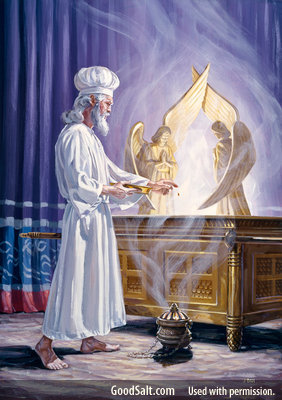 Throughout this prophecy series, we have followed Jesus, our High Priest, through the sanctuary. We saw at the beginning of the book of Revelation Jesus was dressed in His priestly garments standing among the seven-branched menorah (Revelation 1:13). In Revelation chapters 4 and 5, John is taken in vision into the heavenly sanctuary where Jesus (represented by a Lamb that had been slain) is standing before the throne of God as “the seven lamps of fire” burned before the throne. We showed how the throne in this room was represented in the earthly sanctuary by the Table of Showbread with its two crown moldings representing God and His Son. In Revelation chapters 8 and 9, we saw events played out on this earth as Jesus ministered at the Altar of Incense. Then in chapter 11, we learned of a judgment that would begin as Jesus entered in the Holy of Holies where the Ark of the Covenant is. We learned how this judgment parallels the issues that were dealt with during Yom Kippur (the Day of Atonement).
Throughout this prophecy series, we have followed Jesus, our High Priest, through the sanctuary. We saw at the beginning of the book of Revelation Jesus was dressed in His priestly garments standing among the seven-branched menorah (Revelation 1:13). In Revelation chapters 4 and 5, John is taken in vision into the heavenly sanctuary where Jesus (represented by a Lamb that had been slain) is standing before the throne of God as “the seven lamps of fire” burned before the throne. We showed how the throne in this room was represented in the earthly sanctuary by the Table of Showbread with its two crown moldings representing God and His Son. In Revelation chapters 8 and 9, we saw events played out on this earth as Jesus ministered at the Altar of Incense. Then in chapter 11, we learned of a judgment that would begin as Jesus entered in the Holy of Holies where the Ark of the Covenant is. We learned how this judgment parallels the issues that were dealt with during Yom Kippur (the Day of Atonement).
The events surrounding the Millennium and Satan being bound for 1,000 years on a desolate earth is the fulfillment of the Day of Atonement. During the earthly Day of Atonement the high priest, and only the high priest, would enter the Holy of Holies of the sanctuary. On this day, the high priest was to go into the sanctuary with the blood of a bull to make atonement for himself. He had to be “pure” before entering the sanctuary (Leviticus 16:3, 6). The priest would enter the Holy of Holies with the blood of the bull and with incense and a censer. The incense would fill the Holy of Holies and cover the Mercy Seat upon the Ark of the Covenant. Then the high priest would sprinkle some of the blood from the bull upon the Mercy Seat seven times (verses 12-15).
After this, the priest would come out of the sanctuary, through the front veil, to the Courtyard. The high priest would then “take from the congregation of the children of Israel two kids of the goats as a sin offering, and one ram as a burnt offering ... He shall take the two goats and present them before the Lord at the door of the tabernacle of meeting [veil leading into the first apartment]” (verses 5,7).
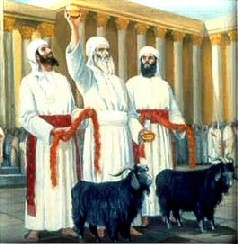 At the door of the tabernacle the priest was to cast lots for the two goats – “one lot for the LORD and the other lot for the scapegoat” (verse 8).
At the door of the tabernacle the priest was to cast lots for the two goats – “one lot for the LORD and the other lot for the scapegoat” (verse 8).
“And Aaron shall bring the goat on which the LORD’s lot fell, and offer it as a sin offering. But the goat on which the lot fell to be the scapegoat shall be presented alive before the LORD, to make atonement upon it, and to let it go as the scapegoat into the wilderness.” (Leviticus 16:4–10)
We have indicated in our previous studies of the sanctuary, and why it needed to be cleansed, that the Sanctuary does not fully represent God’s character but rather it represents the process through which man is reconciled to God. Scripture tells us that God does not desire, nor even require sacrifices and offerings (Psalm 40:6). That means this event reflects our human perceptions of judgment. The process by which the two goats are chosen is by lottery. Either goat could be the Lord’s goat or the scapegoat. This is the first place in the Bible where drawing a lot is mentioned. This principle of placing the guilt of a nation upon a man or an animal was common in pagan cultures. It fits perfectly with how the natural man resolves guilt.
It was Adam and Eve who first introduced the idea of a scapegoat when they condemned and blamed each other, and ultimately the Son of God and thus Christ became the Lamb slain from the foundation of the world (Genesis 3; Revelation 13:8). Thus, the goat which died and was offered as a sin offering, represents Christ. And keep in mind that this not only points TO the time Jesus physically died upon the cross, but shows that even at that time Jesus had been carrying His cross ever since the conception of sin; "In all their affliction He was afflicted, and the angel of His presence saved them: in His love and in His pity He redeemed them; and He bare them, and carried them all the days of old" (Isaiah 63:9). Jesus being crucified for sin is not just a 24-hour event in the first century A.D. as most Christian teachers suggests in order to push their dispensational (Old Covenant/New Covenant) theories. Jesus physically dying upon the cross is a revelation of how He has and will suffer the cross untill the earth is made new. When John said, "Behold, He cometh with clouds; and every eye shall see Him, and they also which pierced Him ..." (Revelation 1:7), he's not only speaking of the Roman soldiers who physically pierced Him. These words also apply to all those who have and are piercing Him today — those who daily dishonor Him by refusing to submit to His will (Hebrews 6:6).
“And when he [Aaron] has made an end of atoning for the Holy Place, the tabernacle of meeting, and the altar, he shall bring the live goat. Aaron shall lay both his hands on the head of the live goat, confess over it all the iniquities of the children of Israel, and all their transgressions, concerning their sins, putting them on the head of the goat, and shall send him away into the wilderness by the hand of a suitable man. The goat shall bear [or, carry] on itself all their iniquities to an uninhabited land; and he shall release the goat in the wilderness.” (Leviticus 16:20-22)
If Christ represents the Lord’s goat, who is this second goat which was to remain alive and released into the wilderness, an inhabited land? In addition, what does it mean that this goat will carry on itself all their iniquities? There is plenty of controversy over who this goat represents. Many Bible teachers teach that the “scapegoat” represents Jesus which makes sense since it does say this goat carries our iniquities. However, there is abundant evidence that the “scapegoat” actually represents Satan:
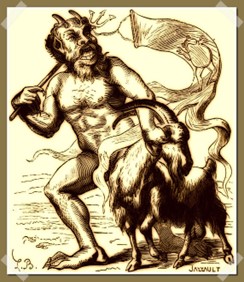 The Hebrew word for “scapegoat” here is עֲזָאזֵל (azazel). The Volgate (Latin version of the Bible) translates azazel as caper emissarius which means “goat sent away.” Scripture tells us that Aaron was to “cast lots for the two goats: one lot for the LORD and the other lot for the scapegoat” (Leviticus 16:8). In the original Hebrew this verse literally reads, “One to Yehovah, and the other to Azazel.” Therefore, this verse treats the scapegoat as one who is the opposite, or opposed to God. The name insinuates the meaning of “one who has separated himself from God,” or “he who has separated himself,” or “he who misleads others” in accordance with Jude 1:6.
The Hebrew word for “scapegoat” here is עֲזָאזֵל (azazel). The Volgate (Latin version of the Bible) translates azazel as caper emissarius which means “goat sent away.” Scripture tells us that Aaron was to “cast lots for the two goats: one lot for the LORD and the other lot for the scapegoat” (Leviticus 16:8). In the original Hebrew this verse literally reads, “One to Yehovah, and the other to Azazel.” Therefore, this verse treats the scapegoat as one who is the opposite, or opposed to God. The name insinuates the meaning of “one who has separated himself from God,” or “he who has separated himself,” or “he who misleads others” in accordance with Jude 1:6.- Scripture says, “without the shedding of blood there is no remission” of sins (Hebrews 9:22). The scapegoat was not killed as a sin offering. It did not shed blood. It could not represent Jesus. The goat offered as the sin offering represented Jesus. The Sanctuary was entirely cleansed before the scapegoat came into play (Leviticus 16:20). It was cleansed by the blood (life) of the sin offering – Jesus. The ceremony surrounding the scapegoat takes place as a result of the final cleansing. (Please reread the study, Why Does the Sanctuary Need to be Cleansed?, to understand the meaning of Hebrews 9:22).
- According to Jewish tradition, Azazel represents the leader of rebellious angels. On page 25 of his book, The Symbolism of the Azazel Goat, Ralph Levy writes, “… in much Jewish interpretation, Azazel is a great fallen angel, perhaps Satan himself. In many Christian writings, the two goats are both Jesus Christ the Messiah.”
- In the Septuagint (the Greek translation of the Hebrew Scriptures), the word “Azazel” is translated as apopompaios which is a Greek word for an evil deity who was appeased by sacrifices.
- “The medieval scholar Nahmanides (1194–1270) identified the Hebrew text as also referring to a demon, and identified this ‘Azazel’ with Samael. However, he did not see the sending of the goat as honoring Azazel as a deity, but as a symbolic expression of the idea that the people’s sins and their evil consequences were to be sent back to the spirit of desolation and ruin, the source of all impurity. The very fact that the two goats were presented before God, before the one was sacrificed and the other sent into the wilderness, was proof that Azazel was not ranked alongside God, but regarded simply as the personification of wickedness in contrast with the righteous government of God.” (Wikipedia).
- In the 19th and 20th centuries, Bible scholars also believed that Azazel represented an evil deity. These scholars include: Samuel M. Zwemer, William Milligan, James Hastings, and William Smith, of the Presbyterian Church; E.W. Hengstenberg, Elmer Flack, and H.C. Alleman, of the Lutheran Church; William Jenks, Charles Beecher, and F.N. PeLoubet, of the Congregational Church; John M’Clintock and James Strong, of the Methodist Church; James M. Gray, of the Reformed Episcopal Church; J.B. Rotherhorn, of the Disciples of Christ; And George A Barton, of the Society of Friends; and many others.
- The English Standard Version provides a footnote for Leviticus 16:8 saying, “The meaning of Azazel is uncertain; possibly the name of a place or a demon, traditionally a scapegoat; also verses 10, 26.”
- Anton Szandor LaVey wrote and published the official Satanic Bible. On page 145 of the Satanic Bible Anton makes a list of 77 Infernal Names. Infernal names, according to Satanists, are names of those who live in the underworld or hell. Among these 77 names is the name Azazel. On pages 55 and 56 of the Satanic Bible, Anton writes, “It was not until the Fourteenth Century that he [Satan] began to be depicted as an evil deity who was part man and part animal, with goat-like horns and hooves ... The association of the goat with the Devil is found in the Christian Bible, where the holiest day of the year, the Day of Atonement, was celebrated by casting lots for two goats ... one to be offered to the Lord, and one to Azazel. The goat carrying the sins of the people was driven into the desert and became a ‘scapegoat.’ This is the origin of the goat ...”
If you were to simply look for “Azazel” on Google images, you will see that Azazel holds no characteristics in harmony with Jesus.
 Since the scapegoat was to carry the “iniquities” and “transgressions” we conclude that Satan also is to carry our “iniquities” and “transgressions.” Not that he’s the one who takes away our sins, or that he’s the one who redeems our sins. NO! Jesus alone does that! All our sins will be placed upon Satan, the originator and instigator of those sins. As we saw in point #5 above, the sending of the goat is not to be understood as honoring Azazel as a deity, "but as a symbolic expression of the idea that the people’s sins and their evil consequences were to be sent back to the spirit of desolation and ruin, the source of all impurity."
Since the scapegoat was to carry the “iniquities” and “transgressions” we conclude that Satan also is to carry our “iniquities” and “transgressions.” Not that he’s the one who takes away our sins, or that he’s the one who redeems our sins. NO! Jesus alone does that! All our sins will be placed upon Satan, the originator and instigator of those sins. As we saw in point #5 above, the sending of the goat is not to be understood as honoring Azazel as a deity, "but as a symbolic expression of the idea that the people’s sins and their evil consequences were to be sent back to the spirit of desolation and ruin, the source of all impurity."
We have previously learned God uses ancient wicked kings to reveal to us the true character and workings of Satan. Considering what we have just learned will come upon Satan (by attributing all the sin upon his head) notice what David says concerning Cush:
“Behold, he travaileth with iniquity, and hath conceived mischief, and brought forth falsehood. He made a pit, and digged it, and is fallen into the ditch which he made. His mischief shall return upon his own head. And his violent dealings shall come down upon his own pate.” (Psalm 7:14-16)
This is describing what will come upon Satan and his followers. Satan’s “mischief shall return upon his own head.” Notice also that David speaks of a “pit” which Satan dug for himself. In Isaiah’s description of what would come upon the king of Babylon (ultimately Satan) he writes, “You shall be brought down to hell [sheol = grave], to the sides of the pit" (Isaiah 14:15). Satan’s destiny is going to be this “pit” which David and Isaiah speak of.
Not that I adhere to all the teachings found in the Apocryphal book of Enoch (which was found among the Dead Sea Scrolls between 1947 and 1956) but notice how it describes the fate of Azazel:
“And again the Lord said to Raphael: ‘Bind Azazel hand and foot, and cast him into the darkness: and make an opening in the desert, which is in Dudael, and cast him therein. And place upon him rough and jagged rocks, and cover him with darkness, and let him abide there forever, and cover his face that he may not see light. And on the day of the great judgment he shall be cast into the fire.’” (Enoch, Book 1, 10:4-7)
Does this not match what we read concerning Satan being bound? Sure, the book of Revelation doesn’t say that the mighty angel placed upon him rough and jagged rocks, but the symbolism is there.
In the 8th chapter of the book of Enoch it says this:
“And Azazel taught men to make swords, and knives, and shields, and breastplates, and made known to them the metals of the earth and the art of working them, and bracelets, and ornaments, and the use of antimony, and the beautifying of the eyelids, and all kinds of costly stones, and all colouring tinctures. And there arose much ungodliness, and they committed fornication, and they were led astray, and became corrupt in all their ways.” (Enoch 8:1-3)
And this is why God says, “The whole earth has been corrupted through the works that were taught by Azazel: to him ascribe all sin” (Enoch, 10:9). So, even though I do not believe the book of Enoch to be inspired, it can still reveal to us their thought process at the time and see how this all fits in with the two goats on the Day of Atonement.
Ascribing to Azazel all sin is the same as placing all the sins upon the head of the scapegoat. Leading this goat into the wilderness is the same as Satan being left upon the desolate earth. Remember what Jeremiah says of the earth and how “it was without form, and void; and the heavens, and they had no light … I beheld, and, lo, the fruitful place was a wilderness” (Jeremiah 23, 26). And right after Isaiah speaks of Satan going down to “the sides of the pit” (Isaiah 14:15), he says, “They that see thee (Satan) shall narrowly look upon thee, and consider thee, saying, Is this the man that made the earth to tremble, that did shake kingdoms; That made the world as a wilderness, and destroyed the cities thereof; that opened not the house of his prisoners?” (Isaiah 14:16, 17).
Ever since Satan deceived Adam and Eve into obeying him, by their choice to disobey God, he has claimed this earth as his. When Jesus was tempted by Satan in the wilderness, Satan took Jesus to a very high mountain and there he “showed Him all the kingdoms of the world and their glory. And he said to Him, ‘All these things I will give You if You will fall down and worship me’” (Matthew 4:8, 9). Satan claimed ownership of all the kingdoms of the world, which were his to give away by saying, “I will give You.” Jesus said that Satan is the “ruler of this world” (John 12:31; 14:30; 16:11).
During the Millennium, Satan will have his earth for 1,000 years! He will walk upon his desolate earth and see all the crumbled mountains. He will see all the burnt debris. He will stumble over all the dead bodies that chose to follow him. He caused all of this. He is the source of all sickness, pain, wars, hatred and death; for he is "the Destroyer" (1 Corinthians 10:10; 1 Peter 5:8) and "a muderer from the beginning" (John 8:44). In his jealous and egotistical plans, he caused God’s perfect world to be turned upside down. There, in this desolate-mangled earth, he will reign as king of this earth for 1,000 years.
To further show this, let's briefly discuss how and why God taught His people to allow the land to rest every 7th and 50th year:
“Six years thou shalt sow thy field, and six years thou shalt prune thy vineyard, and gather in the fruit thereof; But in the seventh year shall be a Sabbath of rest unto the land, a Sabbath for the LORD: thou shalt neither sow thy field, nor prune thy vineyard. That which groweth of its own accord of thy harvest thou shalt not reap, neither gather the grapes of thy vine undressed: for it is a year of rest unto the land … And thou shalt number seven Sabbaths of years unto thee, seven times seven years; and the space of the seven Sabbaths of years shall be unto thee forty and nine years. Then shalt thou cause the trumpet of the jubilee to sound on the tenth day of the seventh month, in the day of atonement shall ye make the trumpet sound throughout all your land. And ye shall hallow the fiftieth year, and proclaim liberty throughout all the land unto all the inhabitants thereof …” (Leviticus 25:3-5, 8-10)
If His people failed to observe the Sabbath years and the Jubilee year, God would permit them to be taken captive by foreign lands in order for the land to rest: “Then shall the land enjoy her Sabbaths, as long as it lieth desolate, and ye be in your enemies' land; even then shall the land rest, and enjoy her sabbaths. As long as it lieth desolate it shall rest; because it did not rest in your Sabbaths, when ye dwelt upon it.” (Leviticus 26:34, 35).
Scripture tells us that the Israelites did not keep God’s Commands (including His command of Sabbath rest for the land) and as a result, the Israelites were conquered by their enemies. The northern kingdom of Israel was conquered by Assyria; and the southern kingdom of Judah was defeated by Babylon. The Babylonian victory was prophesied by Jeremiah who said, “This entire land will become a desolate wasteland. Israel and her neighboring lands will serve the king of Babylon for seventy years.” (Jeremiah 25:11, New Living Translation). God permitted them to be held captive in Babylon for 70 years “to fulfill the word of the LORD by the mouth of Jeremiah, until the land had enjoyed her Sabbaths. As long as she lay desolate, she kept Sabbath, to fulfill seventy years” (2 Chronicles 36:21).
Going back to Leviticus 25, we see that the Jubilee Sabbath would begin when “the trumpet” was “to sound on the tenth day of the seventh month, in the Day of Atonement shall ye make the trumpet sound throughout all your land” (verse 9). That trumpet will sound when Christ returns “at the last trump: for the trumpet shall sound, and the dead shall be raised incorruptible, and we shall be changed” (1 Corinthians 15:52); “for the Lord Himself shall descend from heaven with a shout, with the voice of the archangel, and with the trump of God: and the dead in Christ shall rise first” (1 Thessalonians 4:16).
This numbering of sevens began at creation week when God created the heavens and the earth in 6 days and rested upon the 7th. Here again, we can see the Sabbath instruction as a foreshadow of the 6,000 years of redemptive work by the Father and His Son, and the final rest (Sabbath) during the 7,000th year. Peter wrote, “… with God one day is as a thousand years, and a thousand years as one day” (2 Peter 3:8; see also, Psalm 90:4). Thus, the Jubilee of Jubilees will commence at “the last trumpet sound” announcing Christ’s second coming during the end of the great Day of Atonement and Satan will be bound in the “wilderness” of the desolate earth during the last great 1,000-year Jubilee – “As long as she lay desolate, she kept Sabbath.”
“In the ceremony on the Day of Atonement, the High Priest places both hands on the live goat and confesses, or, as the Hebrew indicates, throws the sins onto the goat … What does this mean? Is Christ doing what Adam did to Him in the beginning? Is He blaming Satan for everything? Jesus has told us that He does not judge or condemn. Yet, we remember what happens at Christ’s judgment seat.
‘The LORD is known by the judgment He executes; the wicked is snared in the work of his own hands.’ —Psalm 9:16
‘As you have done, it shall be done to you; your reprisal shall return upon your own head.’ —Obadiah 1:15
‘Do not be deceived, God is not mocked; for whatever a man sows, that he will also reap.’ —Galatians 6:7
Satan will meet the punishment that he devised. Like Haman who made gallows to hang Mordecai upon (Esther 7:10), Satan himself faces the punishment which he himself has demanded for others. Like the men who brought the woman caught in adultery to condemn her and Jesus instead wrote in the sand and brought their own deeds to their remembrance, so Christ has seen Satan’s whole life. Everything that Satan has done is written upon Christ. Every sin that men have committed is engraved upon Jesus [Isaiah 49:16]. “Aaron shall…confess over it [the goat] all the iniquities of the children of Israel…” The word used here is to confess, it is not to pronounce doom. Part of the meaning of this word confess is:
‘(with extended hands); intensively to bemoan (by wringing the hands).’ —Strong’s Concordance
Like the story of Cain, Christ did not pronounce doom upon Cain when He told or confessed the deeds Cain had done and what would be the results of his actions. He spoke them in tears and sorrow for what would befall him.
‘So now you are cursed from the earth, which has opened its mouth to receive your brother’s blood from your hand. When you till the ground, it shall no longer yield its strength to you. A fugitive and a vagabond you shall be on the earth.’ —Genesis 4:11–12
Like Cain, Satan will be a fugitive and vagabond in the earth for 1000 years, except he will be living in the atmosphere of 6000 years of sin. Christ confesses this over Satan, even as he confessed over Cain what would happen to him because of his wickedness.
From a human perspective we read this as shifting the blame to the original source of the problem, thus removing guilt from the rest of the nation. But God’s justice does not demand this type of debt transfer; it is Satan’s justice, where sin cannot be removed/healed/forgiven, that demands this procedure. For God, what is happening is a process of saying goodbye. It is the moment of reality where Satan must face the deeds that he has done. Christ does not do this in a spirit of condemnation and blame shifting. His thoughts are not our thoughts. Christ and the Father have freely forgiven the saved for all their sins. They do not require sacrifice in order for sin to be forgiven. Through the symbolism of how men understand atonement and the removal of guilt, men are satisfied that God is telling us that the sin problem will be solved … The whole ceremony is dealing with Satan’s justice system and confirms to us that sin will be finally removed from the universe. God did not demand all our sins to be placed on Christ to end the sin problem. We as humanity required this because Adam demanded it in the beginning. It is the only way we understand that guilt can be removed.” (Adrian Ebens, As you Judge, pp. 152-155)
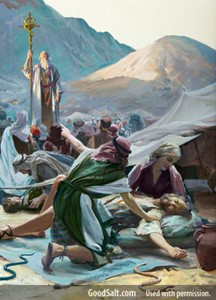 If you remember from our study on The Two Witnesses, we learned about “serpent justice.” We recalled when the Israelites were wandering through the wilderness and they began to complain, they stepped out from under God’s protection and as a result, many of them were bitten by fiery serpents (Numbers 21). As a remedy to this, God instructed Moses to erect a bronze serpent on a pole and anyone who looked at it was healed. Jesus told Nicodemus that the serpent being lifted up on a pole was a representation of Him being lifted up on the cross (John 3:14-17). A serpent in Scripture represents Satan (Revelation 12:9), so when Jesus died upon the cross He was satisfying serpent (satanic) justice which demanded that blood be shed in order for forgiveness to be given.
If you remember from our study on The Two Witnesses, we learned about “serpent justice.” We recalled when the Israelites were wandering through the wilderness and they began to complain, they stepped out from under God’s protection and as a result, many of them were bitten by fiery serpents (Numbers 21). As a remedy to this, God instructed Moses to erect a bronze serpent on a pole and anyone who looked at it was healed. Jesus told Nicodemus that the serpent being lifted up on a pole was a representation of Him being lifted up on the cross (John 3:14-17). A serpent in Scripture represents Satan (Revelation 12:9), so when Jesus died upon the cross He was satisfying serpent (satanic) justice which demanded that blood be shed in order for forgiveness to be given.
The same is taking place in the ceremonies of the Day of Atonement. Interestingly, the Hebrew word for “goats” in Leviticus 16:7 is שָׂעִיר (sa'iyr) which Strong’s Concordance defines as: “devil, goat, hairy, kid, rough, satyr.” One of the definitions Brown-Driver-Briggs gives is: “hairy demon.” Jesus taught that at His coming He will “divide the sheep [referring to His people] from the goats [referring to the lost]” (Matthew 25:32). Could it be that just as Jesus said, “And as Moses lifted up the serpent [a symbol of Satan] in the wilderness, even so must the Son of man be lifted up” (John 3:14), He could also say, “And as Aaron offered up the goat [a symbol of Satan] on the Day of Atonement, so shall the Son of Man be offered up”, thus concluding that in the end, Jesus cleanses our minds once and for all from serpent (goat/satanic) justice?
“For He (God) hath made Him (Jesus) to be sin for us, who knew no sin; that we might be made the righteousness of God in Him.” (2 Corinthians 5:21)
In Ezekiel 28:17 God says of Satan, “Thine heart was lifted up because of thy beauty, thou hast corrupted thy wisdom by reason of thy brightness: I will cast thee to the ground, I will lay (expose) thee before kings, that they may behold thee.”
 During the Millennium, John sees the saved reigning as kings and priests with Christ “and judgment was given unto them” (Revelation 20:4). This is in the same sense as Daniel spoke of in chapter 7 when he said, “and judgment was given to the saints of the most High; and the time came that the saints possessed the kingdom” (Daniel 7:22). The “judgment” that is “given” to the saints will be an internal judgment, or proper discernment of God’s righteousness and how He executes justice. Just before Jesus returns, the living saints will be given proper discernment of God’s true character and will be sealed with His “name” (character) in their “foreheads”, meaning their reasoning (Revelation 7:1-4; 14:1). During the Millennium, we see that this judgment of proper discernment is now given to those who rise from the grave during the first resurrection.
During the Millennium, John sees the saved reigning as kings and priests with Christ “and judgment was given unto them” (Revelation 20:4). This is in the same sense as Daniel spoke of in chapter 7 when he said, “and judgment was given to the saints of the most High; and the time came that the saints possessed the kingdom” (Daniel 7:22). The “judgment” that is “given” to the saints will be an internal judgment, or proper discernment of God’s righteousness and how He executes justice. Just before Jesus returns, the living saints will be given proper discernment of God’s true character and will be sealed with His “name” (character) in their “foreheads”, meaning their reasoning (Revelation 7:1-4; 14:1). During the Millennium, we see that this judgment of proper discernment is now given to those who rise from the grave during the first resurrection.
The Lake of Fire and the Second Death
“And they (the lost) went up on the breadth of the earth, and compassed the camp of the saints about, and the beloved city: and fire came down from God out of heaven, and devoured them. And the devil that deceived them was cast into the lake of fire and brimstone, where the beast and the false prophet are, and shall be tormented day and night for ever and ever. And I saw a great white throne, and Him that sat on it, from whose face the earth and the heaven fled away; and there was found no place for them. And I saw the dead, small and great, stand before God; and the books were opened: and another book was opened, which is the book of life: and the dead were judged out of those things which were written in the books, according to their works. And the sea gave up the dead which were in it; and death and hell delivered up the dead which were in them: and they were judged every man according to their works. And death and hell were cast into the lake of fire. This is the second death. And whosoever was not found written in the book of life was cast into the lake of fire.” (Revelation 20:9-15)
Once again John mentions a scene of opening books. Here is when the rest of the world, who partake of the second resurrection, are diagnosed and come to acknowledge their sin, which remains unremedied because their conscience is seared being unable to receive proper discernment of God’s character. It does not say judgment (proper discernment) was "given" them, but says they are judged "according to their works" — their own idea of justice, thus "there was found no place for them."
Much confusion exists over this “lake of fire” where people are “tormented day and night forever and ever.” First, take notice that John says, “And the devil that deceived them was cast into the lake of fire and brimstone, where the beast and the false prophet are, and shall be tormented day and night for ever and ever.” The word “are” is a supplied word by the translators. A much better translation here would be, “And the devil that deceived them was also cast into the lake of fire and brimstone, where the beast and the false prophet were cast.” Now remember, we have learned that the beast represents the papal kingdom and the false prophet represents apostate Protestantism. How is it that kingdoms can be cast into the fire? It’s talking about the ideology of religious tyranny being forever devoured out of existence. “The kingdoms of this world are become the kingdoms of our Lord, and of Christ [the Rock which strikes the procession of kingdoms at the very toes, causing the whole system to crumble - Daniel 2]; and He shall reign forever and ever” (Revelation 11:15). This is how modern-day “Babylon”, with her false gods, false festivals and ideologies comes to an end; “Therefore shall her plagues come in one day, death, and morning, and famine; and she shall be utterly burned with fire…” (Revelation 18:8).
We’ve discussed the proper meaning of the word “torment” when we studied about the Two Witnesses. We saw that this torment is the mental anguish one feels when full conviction of sin settles in and the mercy of God is not received due to the sinner not believing that God can and will simply forgive them. Like Jesus upon the cross, the weight of sin crushes them. John says that they had fled from the face of God who was sitting upon the throne. Not believing in God’s free forgiveness has permitted their sin to hide (cloud) God’s ever-merciful face, deceiving them that God will not listen to their prayers.
“Behold, the LORD'S hand is not shortened, that it cannot save; neither His ear heavy, that it cannot hear: But your iniquities have separated between you and your God, and your sins have hid His face from you, that He will not hear.” (Isaiah 59:1, 2)
Like Jesus, who “tasted death for everyone” (Hebrews 2:9), they cry, “My God, My God, Why hast Thou forsaken me” even though God is and always has been right there by their side (Matthew 27:46; Psalm 22:1, 24). Remember again what Isaiah tells us:
“In all their affliction He (Christ) was afflicted, and the angel of His presence saved them: in His love and in His pity He redeemed them; and He bare them, and carried them all the days of old.” (Isaiah 63:9)
However, Isaiah continues and says as “they rebelled and grieved His Holy Spirit”; “He was turned to be their enemy, and He fought against them” (verse 10). Not that Christ was changing His mind to become their enemy and fight them, but in their sin and unbelief they perceive Him fighting against them. All of their afflictions are seen as being caused by God in His anger, lashing out to punish them for not obeying His so-called rules. Like Cain, they misunderstand God’s character and cry, “My crime is too great for me to be forgiven” (Genesis 4:13, margin). The truth is, they had forsaken God and pushed Him away, grieving His Spirit, and thus reaped the inherent consequences that naturally come as one unplugs themselves from the only source of life, love, happiness and peace.
 Most people view hell as a huge lake of fire where God and His angels throw bad people into in order to torture their wayward souls for eternity. I was recently appalled as I watched an animated YouTube video showing a certain ministeries' understanding of how the judgment will play out. After a man had been found guilty and condemned, an angel grabbed him and dragged him across the heavenly courtroom floor kicking and screaming. The angel then drags him to the edge of a cliff and tosses him into a lake of fire and watches as the man screams in agony.
Most people view hell as a huge lake of fire where God and His angels throw bad people into in order to torture their wayward souls for eternity. I was recently appalled as I watched an animated YouTube video showing a certain ministeries' understanding of how the judgment will play out. After a man had been found guilty and condemned, an angel grabbed him and dragged him across the heavenly courtroom floor kicking and screaming. The angel then drags him to the edge of a cliff and tosses him into a lake of fire and watches as the man screams in agony.
One such Scripture that is used as “proof” of this scenerio is found in the book of Matthew:
“The Son of man (Christ) shall send forth His angels, and they shall gather out of His kingdom all things that offend, and them which do iniquity; And shall cast them into a furnace of fire: there shall be wailing and gnashing of teeth.” (Matthew 13:41, 42)
The Greek word for “cast” here is βάλλω (balló) which can mean both in a forceful way or non-forceful way depending on the context. Knowing that God never uses force, we must conclude that its use is non-forceful. The second definition of balló in the Thayer’s Greek Lexicon suggests: “without force and effort; to throw or let go of a thing without caring where it falls … to give over to one’s care uncertain about the result.” Obviously, not caring where it falls is not experienced by God. Even though He is forced to let go, He does it reluctantly and with tears.
Balló is also used in the sense of “to send” as in this verse: “Think not that I am come to send (balló) peace on earth: I came not to send (balló) peace, but a sword” (Matthew 10:34). Many times in Scripture God is said to “send” things but the meaning is that He reluctantly “permitted” it to happen:
“Then God sent an evil spirit between Abimelech and the men of Shechem; and the men of Shechem dealt treacherously with Abimelech.” (Judges 9:3)
“And for this cause God shall send them strong delusion, that they should believe a lie.” (2 Thessalonians 2:11)
Does God really send evil spirits and delusions, or does He permit them? In the same sense, do the angels forcefully cast or send the lost into a furnace of fire, or do they reluctantly permit this, thus giving them over to their own consequences they reap as the Thayer’s Greek Lexicon suggested?
Another definition of balló is "to set, to insert or to put into a particular state" without the use of any force at all. It doesn't even require physically touching the object. In Exodus 20:5 God speaks about "visiting the iniquity of the fathers upon the children unto the third and fourth generation of them that hate Me." The word, "visiting" here is used in the sense of "overseeing." God would oversee events and circumstances, permitting them to play out over time (snowball effect), thus the sins of the fathers will inherently affect the children of the third and fourth generations. So, the "casting" or "sending" people into the furnace of fire is simply the angels setting up or overseeing the conditions (the gathering of the lost around the New Jerusalem) resulting in what the lost will eventually experience. But to understand this, we must continue in our study to fully understand what the furnace of fire (or the lake of fire) actually is. And let me say this now, it's not what you think!
Take note that John says, “death and hell were cast into the lake of fire.” How can hell be cast into the lake of fire? The Greek word for hell here is ᾍδης (hades) which in the Greek mindset means, “the place where departed spirits go” but should actually be understood along with the Hebrew word שְׁאוֹל (sheol) which the King James Version translates as “the grave” 31 times. For example, Job said:
“O that Thou wouldest hide me in the grave (sheol), that Thou wouldest keep me secret, until Thy wrath be past, that Thou wouldest appoint me a set time, and remember me!” (Job 14:13)
Here, Job is placing his trust in God who will preserve him while dead and buried and not let him see eternal corruption or eternal separation from God. His hope is to take part in the first resurrection when he will rise from sheol (the grave) “at the last day” (John 6:39-40, 44, 54). Interestingly, the Douay Version translates it like this:
“Who will grant me this, that Thou mayest protect me in hell, and hide me till Thy wrath pass?”
Asking God to protect him in hell is rather odd isn't it? Well, it shoudn't be now that you know the true meaning of the word. In Scripture, the lake of fire is used metaphorically as the place where all sin and death is consumed. Scripture speaks of God as being a consuming fire to sin wherever present (Deuteronomy 4:24; 9:3; Hebrews 12:29). This consuming fire is the full manifestation of God’s selfless love:
“Set me as a seal upon thine heart, as a seal upon thine arm: for love is strong as death; jealousy is cruel as the grave: the coals thereof are coals of fire, which hath a most vehement flame.” (Song of Songs 8:6)
It is God’s love and truth which consumes all sin, and EVERYONE, both saint and sinner, will be consumed by it. The consuming fire is NOT a place that you as a believer should flee from, but instead should be a place where you desire to be! You as a believer should have the desire that all your sins be consumed. We should all desire to be “baptized (immersed) with the Holy Spirit and with fire” (Luke 3:16). And what does the Holy Spirit do? “He will reprove (convict) the world of sin, and of righteousness, and of judgment” (John 16:8). Christ’s Spirit doesn’t reprove or convict in the sense of condemning and accusing, but will convict as a loving “Comforter” (John 16:7). As long as you are at-one with God’s character, revealed through Jesus, only the sin will consume away. You will be like the bush which “burned with fire, and the bush was not consumed” (Exodus 3:2). Or like the three Hebrews who were cast into the furnace of fire, “whose bodies the fire had no power; the hair of their head was not singed nor were their garments affected, and the smell of fire was not on them” (Daniel 3:27). Contrary to popular belief, it is the righteous who will live eternally in the everlasting, devouring fire:
“The sinners in Zion are afraid; fearfulness hath surprised the hypocrites. Who among us shall dwell with the devouring fire? who among us shall dwell with everlasting burnings? He that walketh righteously, and speaketh uprightly; he that despiseth the gain of oppressions, that shaketh his hands from holding of bribes, that stoppeth his ears from hearing of blood, and shutteth his eyes from seeing evil.” (Isaiah 33:14, 15)
“So it is indeed ETERNAL FIRE that consumes the wicked, but it is not fire specially created for that purpose, nor does the fact that it is eternal prove that those who suffer from it will live eternally, but just the opposite. ALL, BOTH SAINTS AND SINNERS, WILL BE IN THE MIDST OF IT, so that all will be treated alike, and God cannot be accused of injustice; but the nature of the INDIVIDUAL will determine how the FIRE will AFFECT HIM. Only those who have become transformed into the likeness of God, who have His life as their life, so that they are partakers of the Divine nature [2 Peter 1:4], sharers of the glory, will be able to come through the fire unscathed, and, in fact, TO CONTINUE DWELLING IN IT. They are of the same nature as the devouring flame, and hence can dwell in it and not be consumed. All others will perish. The mercy of God endures forever, and that which perpetuates the existence of those who become assimilated to it, ends the existence of the rebellious.” (E.J. Waggoner, Present Truth UK, June 29, 1899, p. 407)
As we can see, the fire which consumes the wicked to death is NOT a fire of combustion. God is not burning people alive and especially not torturing them for eternity to suffer endless pain and agony. It is true that Scripture uses phrases such as the lost drinking “of the wine of the wrath of God, which is poured out without mixture … and he shall be tormented with fire and brimstone in the presence of the holy angels, and in the presence of the Lamb: And the smoke of their torment ascendeth up forever and ever” (Revelation 14:10, 11). However, the Greek word translated as “brimstone” is θεῖον (theion) which is from the word θεός (theos) and means “divinity.” It should be translated as “divine incense” or “holy fire” because it is the fire of God’s purifying presence. It is the same "holy fire/incense" that consumed Nadab and Abihu and yet they were carried out of the sanctuary "in their coats" (Leviticus 10:1-5).
Notice also that it’s the “smoke” which ascends up forever and ever. Smoke is what remains after something is burned. This is symbolic of the memory of how sin caused such sorrow and destruction. It will never be forgotten, thus the reason why “affliction will not rise up a second time” (Nahum 1:9). We must also consider the fact that sometimes the word “forever” in Scripture means “until the end of the age.” The word “forever” is used 56 times in the Old Testament in connection with things that have already ended. Please see the article entitled: Doesn’t the Bible Say That God Will Burn and Torture People “Forever and Ever”?
What consumes the wicked to death is their severe mental anguish caused by self-guilt and self-condemnation. Jesus said that men’s hearts will fail them due to intense fear (Luke 21:26, please see the article entitled: Did God Kill Ananias and Saphiria? for more details on this concept). It’s the nature of the individual, and how they perceive God, which will determine how the fire of God’s love affect them. God’s love hardened Pharaoh’s heart which led to his demise (Exodus 7:3; Exodus 8:32). God always approaches the sinner in mercy, but if the sinner does not believe in His mercy, he shall die without mercy. You can’t receive what you don’t believe is there to grasp. This is the meaning of God’s wrath being poured out “without mixture.” It’s without mixture due to the sinner’s perception of God’s wrath, believing it is poured out without mercy. However, God’s wrath is executed by Him reluctantly giving man over to the selfish decisions they choose. Thus, when the sinner rejects or disbelieves in God’s mercy, the effect of God’s love will be as coals of fire upon their heads.
“Dearly beloved, avenge not yourselves, but rather give place unto wrath: for it is written, Vengeance is mine; I will repay, saith the Lord. Therefore if thine enemy hunger, feed him; if he thirst, give him drink: for in so doing thou shalt heap coals of fire on his head. Be not overcome of evil, but overcome evil with good.” (Romans 12:19-21)
The meaning of heaping coals of fire upon someone’s head is not condemning them to burn in the fires of hell, but that by overcoming evil with good, you will convict the person of their sin to lead them to repentance. The fire of God’s love and mercy convicts the sinner. God NEVER condemns the sinner. Condemnation only comes from the sinner himself due to the way he responds to the conviction. Charles Spurgeon once said: “The same sun which melts wax hardens clay. And the same Gospel which melts some persons to repentance hardens others in their sins.” Now, is it the sun doing this or is it the ingredients in the wax and clay reacting to the sun? Paul describes it this way:
 “For we are to God the sweet aroma of Christ among those who are being saved and those who are perishing. To the one [rejecter of God’s love], we are an odor of death and demise; to the other [receiver of God’s love], a fragrance that brings life.” (2 Corinthians 2:15-16)
“For we are to God the sweet aroma of Christ among those who are being saved and those who are perishing. To the one [rejecter of God’s love], we are an odor of death and demise; to the other [receiver of God’s love], a fragrance that brings life.” (2 Corinthians 2:15-16)
God had foretold the fate of Satan by saying, “therefore will I bring forth a fire from the midst of thee, it shall devour thee, and I will bring thee to ashes upon the earth in the sight of all them that behold thee” (Ezekiel 28:18). The fire of conviction comes forth from within Satan and instead of repenting, he is devoured by self-guilt and self-condemnation.
There must be some good amount of time between the descending of the New Jerusalem and the fiery fate of the lost; for it will take Satan some time to go out and “deceive the nations which are in the four quarters of the earth” and “gather them together to battle.” The battle obviously doesn’t go as they plan and yet during this time, the gates of the city (the doors of opportunity) are left open as the final call goes out for all to come up and enjoy the seventh and final Feast of the Lord – the Feast of Tabernacles.
“And it shall come to pass, that every one that is left of all the nations which came against Jerusalem shall even go up from year to year to worship the King, the LORD of hosts, and to keep the Feast of Tabernacles.” (Zechariah 14:16)
As the fire of conviction burns from the midst of the lost, every knee bows and every tongue confesses, as everyone gives an account of himself to God (Romans 14:11, 12). Everyone who was listening to the voice of Jesus’ Spirit were drawn to Him, being reconciled unto the Father, but the worshipers of self belong to Satan’s kingdom. In our attitude towards Christ, all will show which side we stand. And thus everyone passes judgment on himself and God accepts that judgment as just.
“Thine own mouth condemneth thee, and not I: yea, thine own lips testify against thee.” (Job 15:6)
“The heathen are sunk down in the pit that they made: in the net which they hid is their own foot taken. The Lord is known by the judgment which He executes: the wicked is snared in the work of his own hand.” (Psalm 9:15, 16)
“Out of your mouth I will judge you, evil servant: you knew (perceived) that I am a severe man …” (Luke 19:22)
The judgment will reveal the fact that full and complete salvation was given to every man, and that the lost have deliberately rejected it. Even though every knee bows, not every knee bows in repentance. Pharaoh, who had hardened his heart, later confessed to Moses saying, “take your flocks and your herds, as ye have said, and be gone; and bless me also” (Exodus 12:32). But his heart was still not softened and so he gathered the Egyptian army and pursued the Israelites, only to find himself drowning in the midst of the sea. Likewise, the lost in the end will bow the knee, but the heart is still not softened unto repentance and they gather for battle and charge the city, only to find themselves in the midst of fiery anguish of mind and soul as God's "fiery Law" enters their conscience (Deuteronomy 33:2). Notice how Isaiah describes the scene:
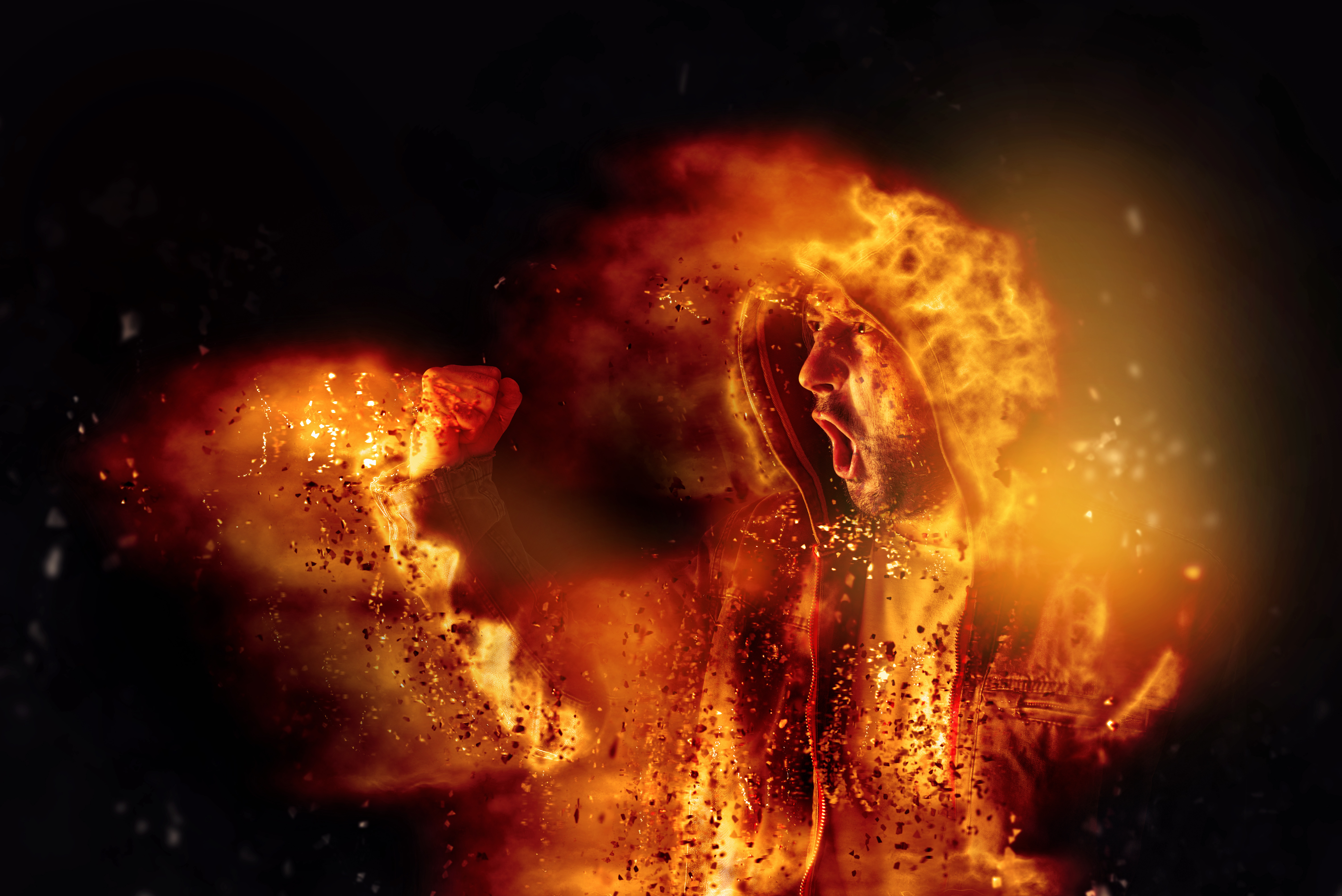 “Therefore shall all hands be faint, and every man's heart shall melt [give up hope]: And they shall be afraid: pangs and sorrows shall take hold of them; they shall be in pain as a woman that travaileth: they shall be amazed one at another; their faces shall be as flames.” (Isaiah 13:7, 8)
“Therefore shall all hands be faint, and every man's heart shall melt [give up hope]: And they shall be afraid: pangs and sorrows shall take hold of them; they shall be in pain as a woman that travaileth: they shall be amazed one at another; their faces shall be as flames.” (Isaiah 13:7, 8)
Hosea also speaks of this mental anguish caused by the conviction of sin:
“For they have made ready their heart like an oven, whiles they lie in wait: their baker sleepeth all the night; in the morning it (their heart/conscience) burneth as a flaming fire.” (Hosea 7:6)
And in their self-condemned state they all turn on Satan and one another, vainly looking once more for a sacrifice and scapegoat:
“ … Because you (Satan) have set your heart as the heart of God, I will therefore bring strangers upon you, the most terrifying of nations, and they shall draw their swords against the beauty of your wisdom, and they shall defile your brightness. They shall bring you down to the pit, and you will die the death of those who are slain, in the heart of the seas … you will die the death of the uncircumcised [unrepentant] by the hand of strangers …” (Ezekiel 28:6-8, 10)
“And this shall be the plague wherewith the LORD will smite all the people that have fought against Jerusalem; Their flesh shall consume away while they stand upon their feet, and their eyes shall consume away in their holes, and their tongue shall consume away in their mouth. And it shall come to pass in that day, that a great tumult from the LORD shall be among them; and they shall lay hold every one on the hand of his neighbour, and his hand shall rise up against the hand of his neighbour.” (Zechariah 14:12, 13)
“Through the wrath of the LORD of hosts is the land darkened, and the people shall be as the fuel of the fire: no man shall spare his brother.” (Isaiah 9:19)
This is the meaning of Jesus’ words when He said, “there shall be wailing and gnashing of teeth” (Matthew 13:42). Steven experienced this from the religious leaders after they were convicted of their sins:
“Ye stiffnecked and uncircumcised in heart and ears, ye do always resist the Holy Ghost: as your fathers did, so do ye. Which of the prophets have not your fathers persecuted? and they have slain them which shewed before of the coming of the Just One; of whom ye have been now the betrayers and murderers: Who have received the Law by the disposition of angels, and have not kept it. When they heard these things, they were cut to the heart, and they gnashed on him with their teeth ... Then they cried out with a loud voice, and stopped their ears, and ran upon him with one accord, And cast him out of the city, and stoned him ...” (Acts 7:51-54, 57, 58)
But what about Zechariah's description above where he says “their eyes shall consume away in their holes, and their tongue shall consume away in their mouth”?
“This verse is a fearful-sounding representation of the final fate of the lost at the end of the Millennium. Is that speaking of a physical consuming? (‘Smite’ is also used in scripture in the sense of to get one’s attention [1 Samuel 24:5; 2 Samuel 24:10; Acts 12:7]) … Some have seen it as people being exposed to the explosion of a neutron bomb … However, as always, we need to consider whether the Bible has its own definition and whether that is different from the popular understanding.
To ‘consume away’ is from the Hebrew word “maqaq” (Strong’s H4743) which means “to pine away.” The website www.dictionary.com gives these meanings for pine:
- to yearn deeply; suffer with longing; long painfully
- to fail gradually in health or vitality from grief, regret, or longing
This verse, with its use of terms similar to Zechariah 14:12, seems to relate:
‘For all that is in the world, the lust of the flesh, and the lust of the eyes, and the pride of life, is not of the Father, but is of the world.’ (1 John 2:16)
It is interesting that John mentions three categories of sins that seem to line up with what is described as being consumed in Zechariah 14:12 (‘Pride of life’ is mainly expressed via the tongue as in bragging) … Notice that Eve experienced these same three categories of temptation:
‘And when the woman saw that the tree was good for food [the lust of the flesh], and that it was pleasant to the eyes [the lust of the eyes], and a tree to be desired to make one wise [the pride of life], she took of the fruit thereof, and did eat, and gave also unto her husband with her; and he did eat.’ (Genesis 3:6)
These were also the three areas in which the people of Sodom fell:
‘Behold, this was the iniquity of thy sister Sodom, pride [the pride of life], fulness of bread [the lust of the flesh], and abundance of idleness [the lust of the eyes, materialism] was in her and in her daughters, neither did she strengthen the hand of the poor and needy. (Ezekiel 16:49)
This helps to make sense of what Hebrews says:
‘For we have not an high priest which cannot be touched with the feeling of our infirmities; but was in all points tempted like as we are, yet without sin.’ (Hebrews 4:15)
How could Jesus have been tempted in every way we have been tempted? He was never tempted to drive over the speed limit! ‘All points’ is a reference to these broad categories, not to every little variation of temptation that might come our way. Thankfully, we do have a high priest who was also tempted in each of these categories of sin – and overcame.
And so the flesh, eyes and tongue being consumed is not literal, physical consumption. Rather, what is being described is people pining away, being overwhelmed by all the sins (in three main categories) that they have committed during their lifetime and did not turn from. The consumption is in more of a mental than a physical sense.” (Ray Foucher, The Lake of fire and the Second Death, pp. 19-23)
Always remember it’s the destruction that is eternal. Only those who “believe” will receive “eternal life” and not “perish” as the unbelievers (John 3:16). Because our soul is not a separate entity than our being (Genesis 2:7; KJV), God says, “the soul that sins, it will die” (Ezekiel 18:20). The wicked will receive eternal “death” (Romans 6:23), not eternal life screaming in agony. The wicked, will be “no more” (Proverbs 10:25; Psalm 37:10). The Psalmist says they will “vanish” or, “consume away” (Psalm 37:20). They will be “cut off” and “destroyed” (Psalm 37:28, 34, 38). Like Sodom and Gomorrah, which were destroyed by “eternal fire”, they will eternally return to “ashes” (Jude 7; 2 Peter 2:6; Malachi 4:1, 3; Ezekiel 28:18). Not that God burns them alive until they are ashes, but after they are dead and “the heavens being on fire shall be dissolved, and the elements shall melt with fervent heat” (2 Peter 3:10-11). All this because they push away their loving Father and wander beyond His jurisdiction; for He will not use force nor interfere with our free choice.
“I have consumed them with the fire of My wrath: [how?] their own way have I brought upon their heads …” (Ezekiel 22:31)
Permitting the lost (those who resist His love) to destroy themselves is God’s fiery wrath. For more details concerning hell and the lake of fire, I urge you to read the following:
Books:
Articles:
- Doesn’t the Bible Say That God Will Burn and Torture People “Forever and Ever”?
- What Does the Bible Mean When it Says People Will “Go into Hell … Where Their Worm Dieth Not, and the Fire is not Quenched"?
- Doesn’t Jesus Tell Us to Fear God Who Can Destroy Both Body and Soul in Hell?
The New Earth
“And I saw a new heaven and a new earth: for the first heaven and the first earth were passed away; and there was no more sea … And I heard a great voice out of heaven saying, Behold, the tabernacle of God is with men, and He will dwell with them, and they shall be His people, and God Himself shall be with them, and be their God. And God shall wipe away all tears from their eyes; and there shall be no more death, neither sorrow, nor crying, neither shall there be any more pain: for the former things are passed away.” (Revelation 21:1, 3, 4)
In the end, God’s righteousness will triumph over sin and death. “The last enemy that shall be destroyed is death” (1 Corinthians 15:26). Since there is no death in righteousness (Proverbs 12:28), God Himself does not use death (kill people) to conquer death. If He did, then would not death triumph instead of being destroyed? All will see that God has never needed to use violence to solve anything. Only righteousness and life will endure upon the new earth.
 “And many people shall go and say, Come ye, and let us go up to the mountain of the LORD, to the house of the God of Jacob; and He will teach us of His ways, and we will walk in His paths: for out of Zion shall go forth the Law, and the word of the LORD from Jerusalem. And He shall judge among the nations, and shall rebuke many people: and they shall beat their swords into plowshares, and their spears into pruninghooks: nation shall not lift up sword against nation, neither shall they learn war anymore.” (Isaiah 1:3, 4)
“And many people shall go and say, Come ye, and let us go up to the mountain of the LORD, to the house of the God of Jacob; and He will teach us of His ways, and we will walk in His paths: for out of Zion shall go forth the Law, and the word of the LORD from Jerusalem. And He shall judge among the nations, and shall rebuke many people: and they shall beat their swords into plowshares, and their spears into pruninghooks: nation shall not lift up sword against nation, neither shall they learn war anymore.” (Isaiah 1:3, 4)
“The wolf also shall dwell with the lamb, and the leopard shall lie down with the kid; and the calf and the young lion and the fatling together; and a little child shall lead them. And the cow and the bear shall feed; their young ones shall lie down together: and the lion shall eat straw like the ox. And the sucking child shall play on the hole of the asp, and the weaned child shall put his hand on the cockatrice' den. They shall not hurt nor destroy in all My holy mountain: for the earth shall be full of the knowledge of the LORD, as the waters cover the sea.” (Isaiah 11:6-9)
Being full of the knowledge of God leads to a life of unselfish love because God Himself is unselfish love (1 John 4:8). It’s a life that shuns war, violence, and destruction because God shuns war, violence, and destruction (Jeremiah 22:3). All who are left will be full of this knowledge and completely changed back into the image and likeness of their Creator (2 Corinthians 3:18). Will you not heed this Last Message of Mercy?

